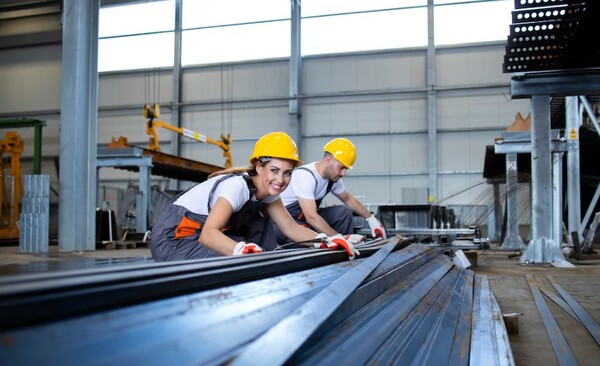Notifications
ALL BUSINESS
COMIDA
DIRECTORIES
ENTERTAINMENT
FINER THINGS
HEALTH
MARKETPLACE
MEMBER's ONLY
MONEY MATTER$
MOTIVATIONAL
NEWS & WEATHER
TECHNOLOGIA
TV NETWORKS
VIDEOS
VOTE USA 2026/2028
INVESTOR RELATIONS
COMING 2026 / 2027
ALL BUSINESS
COMIDA
DIRECTORIES
ENTERTAINMENT
FINER THINGS
HEALTH
MARKETPLACE
MEMBER's ONLY
MONEY MATTER$
MOTIVATIONAL
NEWS & WEATHER
TECHNOLOGIA
TV NETWORKS
VIDEOS
VOTE USA 2026/2028
INVESTOR RELATIONS
COMING 2026 / 2027
 Rory Blake -
May 8 -
Business -
Hybrid Steel Building services
Conventional Steel Structures
-
141 views -
0 Comments -
0 Likes -
0 Reviews
Rory Blake -
May 8 -
Business -
Hybrid Steel Building services
Conventional Steel Structures
-
141 views -
0 Comments -
0 Likes -
0 Reviews

In the ever-evolving world of construction, builders and developers are constantly seeking innovative solutions that balance cost, durability, and design flexibility. Among the most exciting advancements in recent years is the rise of Hybrid Steel Building services, a modern construction method that blends the strengths of traditional steel framing with other materials to deliver unmatched performance. This new approach is rapidly changing how commercial, industrial, and even residential structures are being built.
Hybrid steel buildings combine the benefits of steel with other construction materials such as concrete, wood, or glass. These structures typically use steel as the primary framing component for strength and longevity while incorporating other materials to improve aesthetics, insulation, or cost-efficiency.
For example, a warehouse might use steel columns and beams for its skeleton, while employing insulated concrete panels for walls to enhance energy efficiency. Similarly, office buildings can use steel frames for open-plan flexibility and glass for natural lighting and modern design appeal.
There are several reasons why hybrid structures are becoming a top choice in the construction industry:
Steel is known for its exceptional strength-to-weight ratio, which allows for taller buildings and longer spans without compromising structural integrity. This makes it ideal for commercial and industrial applications.
By integrating other materials, architects can push creative boundaries and design buildings that are not only strong but also visually striking. Hybrid buildings allow for open spaces, modern finishes, and a variety of textures.
Pre-fabricated steel components can be manufactured off-site and quickly assembled on location. When combined with modular wall systems or pre-cast panels, the construction timeline is significantly reduced, saving time and labor costs.
Steel is 100% recyclable, and using it in combination with eco-friendly materials like engineered wood or green concrete reduces the environmental footprint of a building project.
Hybrid construction is often compared to Conventional Steel Structures, which rely exclusively on steel for all aspects of the building's framework. While conventional methods are time-tested and reliable, hybrid solutions bring added versatility and efficiency to the table.
Here’s a quick comparison:
|
Feature |
Hybrid Steel Buildings |
Conventional Steel Structures |
|
Material Usage |
Steel + other materials (wood, concrete, glass) |
Entirely steel |
|
Design Flexibility |
High |
Moderate |
|
Speed of Construction |
Fast |
Fast |
|
Cost-Effectiveness |
More cost-optimized |
May be more expensive depending on size |
|
Aesthetic Appeal |
Greater design possibilities |
Functional, but less customizable |
|
Environmental Impact |
Lower (due to mixed materials) |
Higher (steel-intensive) |
Hybrid steel buildings are already making a mark in various industries.
Retail and Office Spaces: These buildings require both aesthetics and flexibility, which hybrid structures deliver efficiently.
Industrial Warehouses: Hybrid construction allows for durable, expansive layouts with improved insulation.
Educational Institutions: Schools and universities benefit from the quick construction and safe, sustainable materials.
Healthcare Facilities: Hospitals require stringent building standards, which hybrid steel designs can meet while offering better energy efficiency.
While hybrid steel buildings offer numerous benefits, there are a few considerations to keep in mind:
Engineering Complexity: These structures require skilled engineers who understand how different materials interact under load and over time.
Material Compatibility: Proper selection and connection of materials is critical to avoid issues like corrosion or thermal expansion.
Initial Planning: Detailed planning is essential to ensure that prefabricated components fit together seamlessly.
Hybrid steel buildings represent the next step forward in construction. They blend the proven strength of steel with the benefits of alternative materials to create structures that are efficient, versatile, and sustainable. While Conventional Steel Structures will always have their place in heavy-duty industrial builds, the hybrid approach opens up exciting new possibilities for modern architecture.
If you’re considering a construction project—whether it’s a commercial complex, a factory, or a community center—it might be time to explore the advantages of Hybrid Steel Building services. With their enhanced performance, aesthetic flexibility, and long-term savings, they’re truly shaping the future of how we build.
